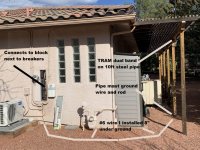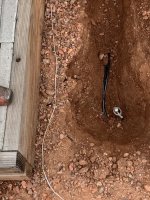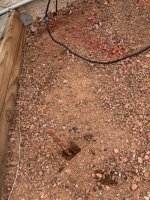What is the downside (besides getting fried) of breaking the seal and taking a peak inside the panel under the meter?
(Much of the heavy gauge wiring you see in the picture and half of the conduit on the wall is my permitted handy work
installing a 60A subpanel in the garage, an electric wall oven & a heat pump for the garage. The other half of the stuff is from the
pros that installed the 7KW solar system. So I at least have survived to 71 by respecting 240A 200A service.)
(Much of the heavy gauge wiring you see in the picture and half of the conduit on the wall is my permitted handy work
installing a 60A subpanel in the garage, an electric wall oven & a heat pump for the garage. The other half of the stuff is from the
pros that installed the 7KW solar system. So I at least have survived to 71 by respecting 240A 200A service.)




